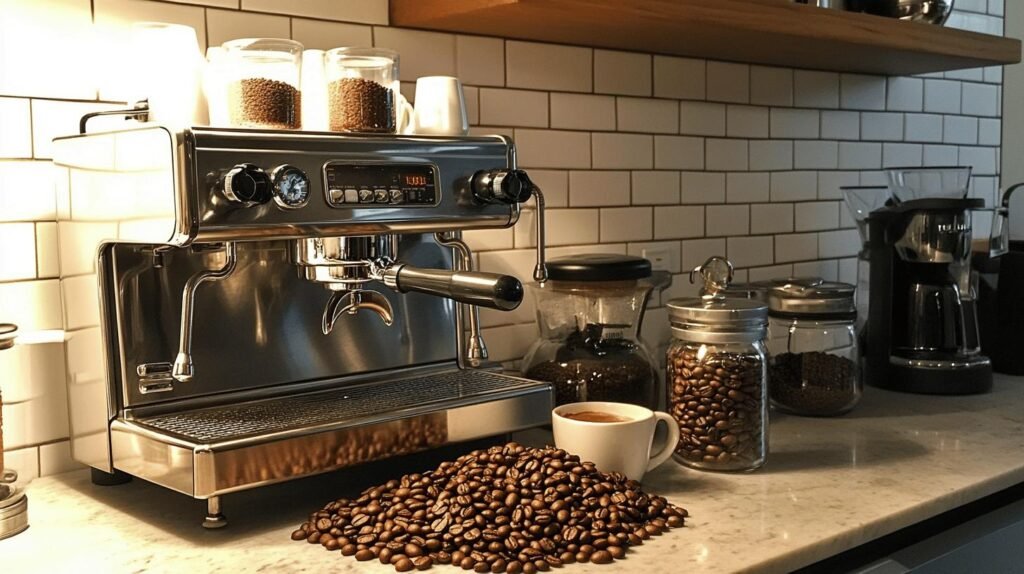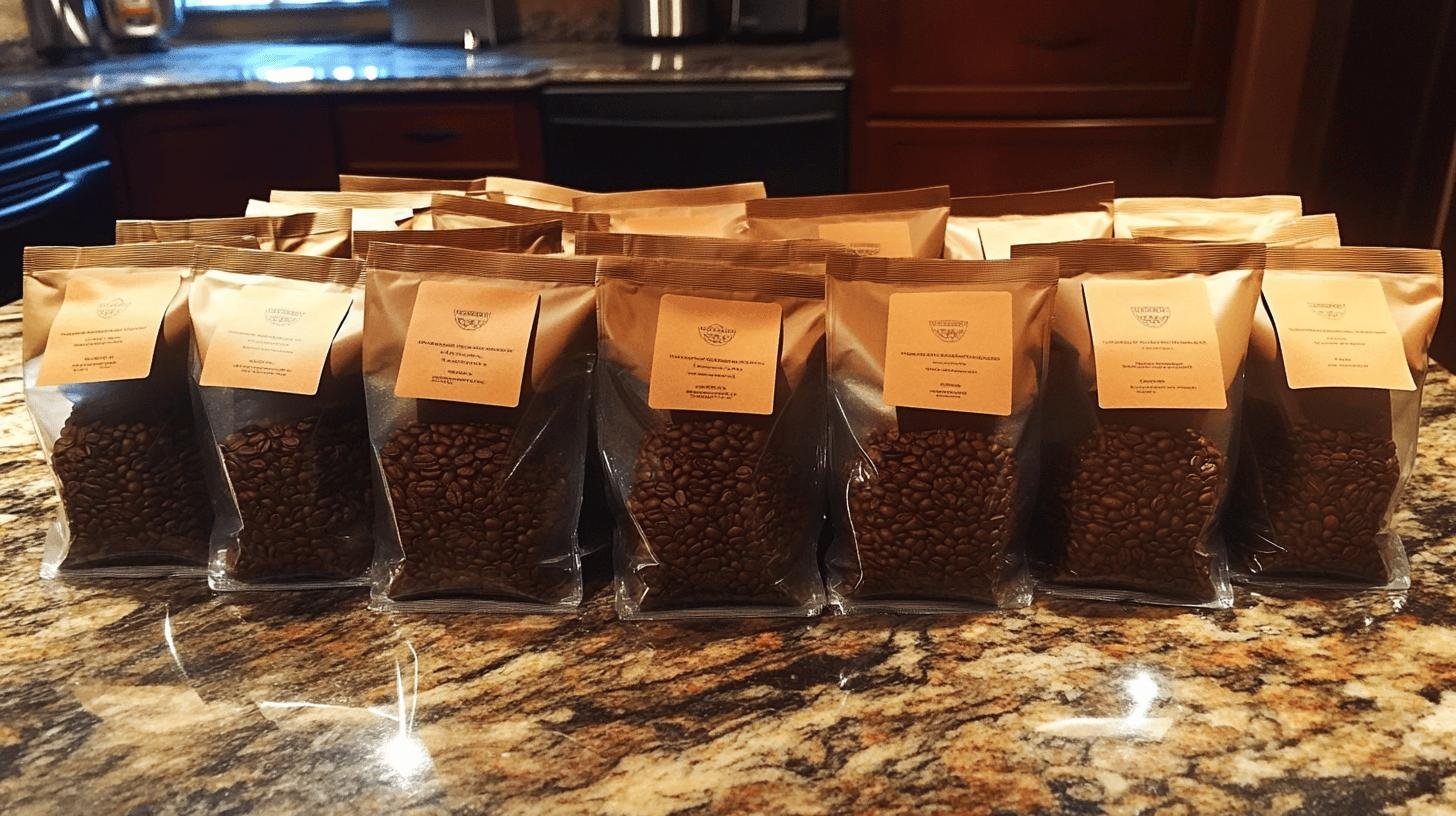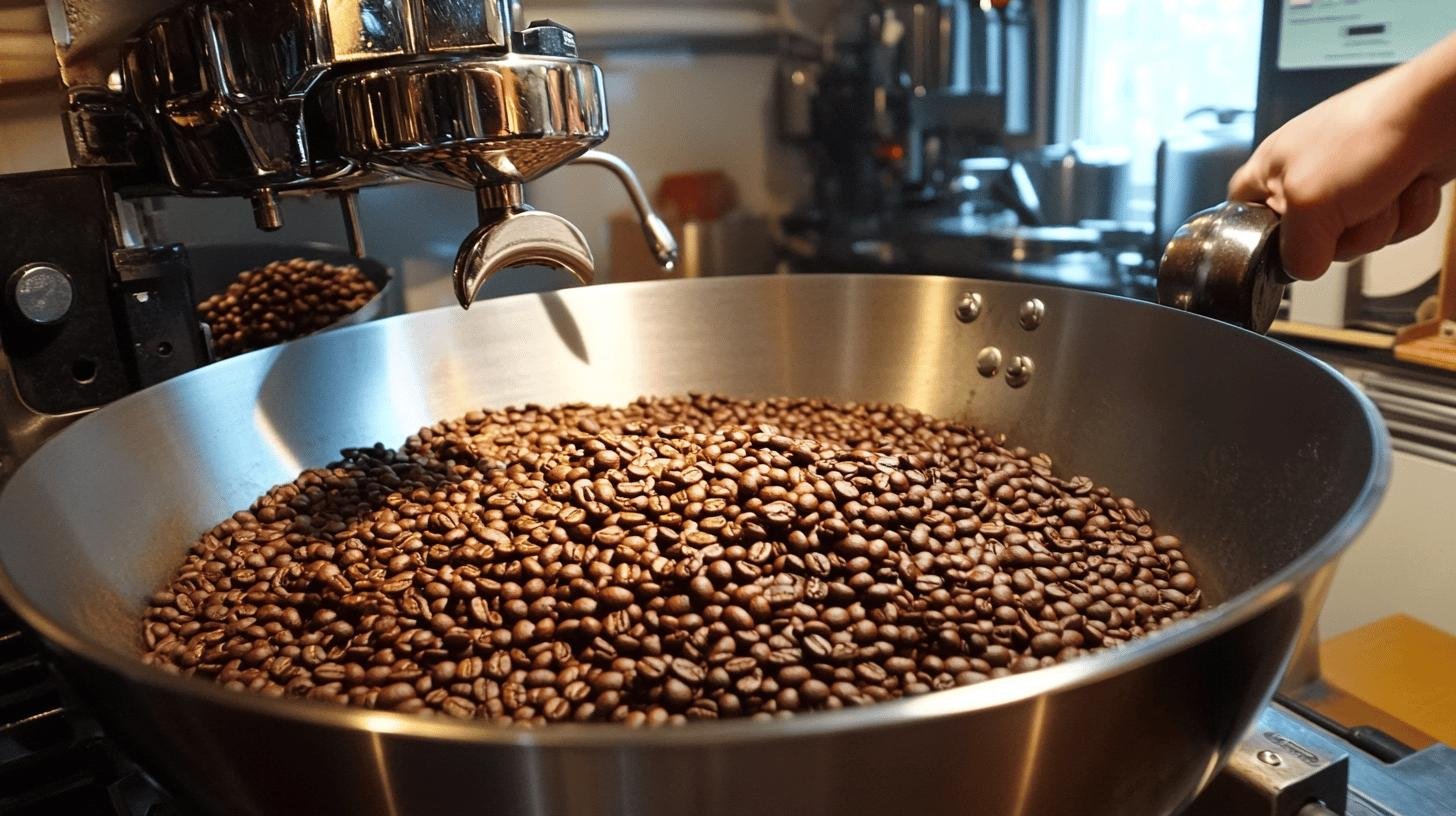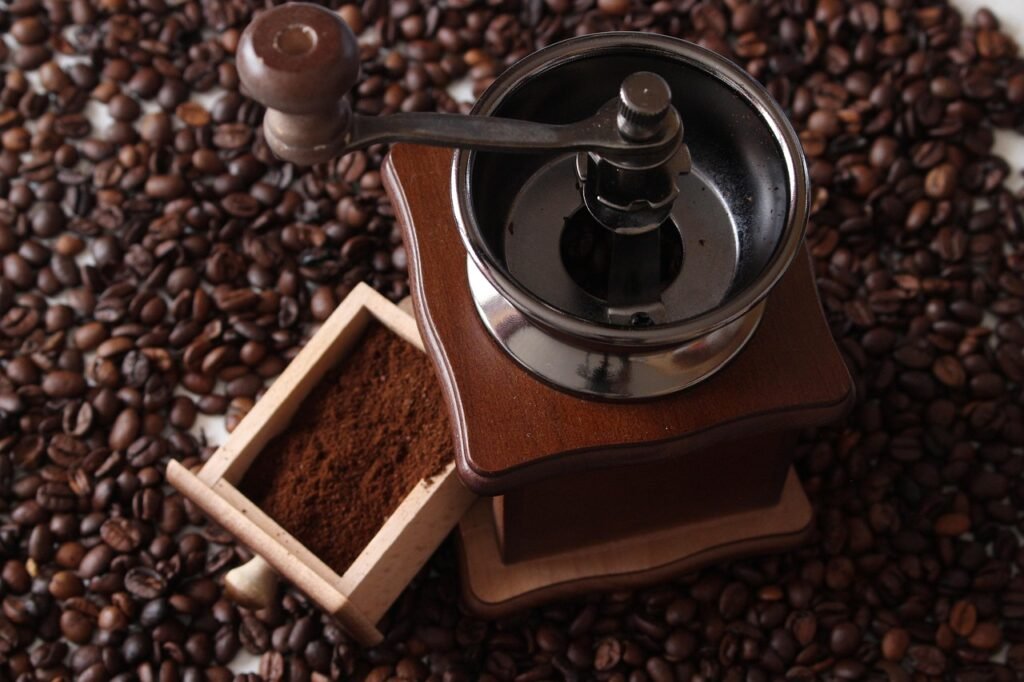
Artisanal Rituals for a Memorable Customer Experience
How can brands create a more balanced and memorable customer experience by blending artisanal product quality with thoughtful everyday rituals that keep people coming back?

TL;DR:
Are you tired of lackluster espresso shots that just don’t hit the mark? The secret to brewing that rich, velvety espresso lies in the beans you choose. Navigating the world of coffee beans for your espresso machine can be overwhelming, with numerous varieties and roast levels to consider. This guide unveils the top picks that promise to transform your home espresso experience. From the intricate balance of Arabica and Robusta to the ideal roast profile, we’re diving deep into what makes these beans stand out. Discover the essentials and elevate every shot you brew.
Choosing the right coffee beans for your espresso machine is crucial for achieving a perfect shot. The variety and roast process of the beans significantly impact the flavor and quality of the espresso. Coffee beans start off green and are roasted in drums, where they change color based on temperature and time. This roasting process is essential because it develops the beans’ flavor, acidity, and body, which are critical for a good espresso.
Different roast levels can affect the taste of the espresso. Beans that are too light are generally considered to produce bad espresso, as they lack the necessary depth and complexity. Typically, the best roasts for espresso range from light-medium to moderately dark. These levels ensure the beans have enough development to bring out rich, nuanced flavors without becoming overly bitter or burnt.
Apart from the roast level, the type of beans also matters. Arabica and Robusta are the two main types of coffee beans. Arabica beans are known for their superior flavor and aroma, while Robusta beans offer a more robust and bitter taste. Blends of these beans are often used to balance the flavors and achieve a more well-rounded espresso. Freshness, grind size, and flavor profile are other factors to consider when selecting the best beans for your espresso machine.

Is home roasting coffee beans more affordable? Yes. Home roasting can significantly reduce the cost per pound of coffee beans. While store-bought beans can range from $15 to $25 per pound, home-roasted beans typically cost between $7 and $12 per pound. This affordability makes it easier to experiment with different beans and roasting profiles without breaking the bank.
Does home roasting lead to better-tasting coffee? Absolutely. Roasting your own beans allows for unparalleled freshness and flavor. Store-bought beans often sit on shelves for weeks or even months, losing their aromatic oils and vibrant flavors. By roasting at home, you can ensure your beans are always at peak freshness, resulting in a richer and more complex espresso.
Can home roasting offer greater customization? Indeed. Home roasting provides the flexibility to tailor the roast level to your specific taste preferences. Whether you prefer a light-medium roast for its bright acidity or a moderately dark roast for its deeper, fuller body, home roasting empowers you to create the perfect espresso bean for your palate.
| Bean Type | Cost per Pound | Quality Rating |
|---|---|---|
| Home Roasted | $7-$12 | High |
| Store-Bought | $15-$25 | Moderate to High |

Roasting your own coffee beans for espresso can elevate your home-brewing experience. To get started, you need the right equipment and a basic understanding of the roasting process. Essential tools include a home coffee roaster, a cooling tray, and airtight storage containers.
The roasting process begins with selecting high-quality green coffee beans. Look for beans known for their flavor complexity and freshness. Preheating your roasting machine is crucial to ensure an even roast. Once preheated, add the beans to the roaster and begin the roasting process. It’s essential to monitor the color and aroma of the beans closely. Beans that are too light generally produce bad espresso, as they lack the necessary depth and complexity.
Achieving the perfect roast level is key to a great espresso. The best roasts for espresso are in the light-medium to moderately dark range. These levels ensure the beans develop rich, nuanced flavors without becoming overly bitter or burnt. Adjust the temperature as needed during the roasting process to achieve the desired roast level. Once the beans reach the appropriate color and aroma, quickly cool them to halt the roasting process.
After roasting, store the beans in an airtight container to preserve their freshness. This step is crucial to maintain the beans’ flavor and prevent them from going stale. Home roasting allows for greater customization, enabling you to experiment with different roast levels and discover the perfect profile for your espresso machine.
For those aiming to craft the perfect espresso at home, several key elements must be considered, starting with the quality and freshness of your beans.
Why is it important to use freshly roasted beans? Freshly roasted beans retain their aromatic oils and vibrant flavors, which are essential for producing a rich and complex espresso. Beans with a roast date rather than a “best before” date ensure maximum freshness. Single-origin espresso, gaining popularity in the specialty coffee scene, offers unique flavor profiles that can elevate your espresso experience.
What is the proper grind size for brewing espresso at home? The grind size plays a crucial role in the extraction process. A fine grind is recommended for espresso machines to ensure the water passes through the coffee grounds at the correct rate, extracting optimal flavors. Grinding the beans just before brewing preserves their freshness and ensures a more flavorful shot. Adjusting the grind size can help you fine-tune your espresso to achieve the perfect balance of acidity, sweetness, and bitterness.
How do equipment settings affect espresso quality? Proper equipment settings are essential for brewing a consistent and high-quality espresso. Preheat your espresso machine to stabilize the temperature, ensuring a uniform extraction. Using filtered water can also make a significant difference, as impurities in tap water can negatively impact the taste. Experimenting with grind size and machine settings can help you find the sweet spot for your particular bean and machine combination.
Understanding the essential factors for choosing and roasting the best coffee beans for espresso machines can elevate home brewing to new heights.
Exploring various top-rated coffee beans offers a rich variety of origins and flavors.
Home roasting adds a personal touch and can be more affordable, while expert tips refine the brewing process.
By focusing on quality beans, proper roasting, and precise brewing, anyone can enjoy high-quality espresso at home.
Elevate your espresso game with the best coffee beans for espresso machines.
The best beans for an espresso machine typically have a dark roast and a pronounced flavor profile.
The best coffee for an espresso machine is often a blend of Arabica and Robusta beans, with a dark or medium-dark roast. Single origins also work well for nuanced flavors.
To pick beans for an espresso machine, consider factors like roast level, origin, freshness, and flavor profile. Dark to medium-dark roasts usually produce the best results.
The best grind for an espresso machine is a fine grind. It should have a texture resembling table salt to ensure optimal extraction and flavor.

How can brands create a more balanced and memorable customer experience by blending artisanal product quality with thoughtful everyday rituals that keep people coming back?

Independent coffee shops have always been about more than caffeine—they’re hubs of creativity, connection, and care. As café culture continues to evolve, new trends are

Introduction Independent cafes win when they feel like the neighborhood’s living room and operate with the discipline of a great kitchen. Below is a quick

Discover how top specialty coffee brands create lasting loyalty through storytelling, sourcing, and community connection. Real tips from 6 industry experts.

Discover the ultimate showdown between two beloved coffee brewing methods: the French press and Chemex. Explore how each technique caters to distinct palates, with the French press delivering bold flavors and the Chemex presenting a bright, clean taste.

Unlock the secrets to brewing the perfect cup of coffee with our comprehensive guide on using a coffee scale. Discover how precise measurements enhance flavor and consistency while eliminating bitterness.

Discover how water temperature plays a vital role in brewing the perfect cup of coffee. This article delves into the ideal temperature range of 195°F to 205°F for optimal flavor extraction, enhancing the enjoyment of high-quality beans.

Discover the world of curated specialty coffee bundles, perfect for enthusiasts seeking quality and craftsmanship. This article explores the benefits of ethically sourced, small-batch beans from brands like Equipoise Coffee, offering diverse flavor profiles that elevate your brewing experience.

Discover the art of manual brewing to elevate your coffee experience! This article explores various techniques like pour-over, French press, and AeroPress, revealing how they enhance flavor and your connection to every cup.